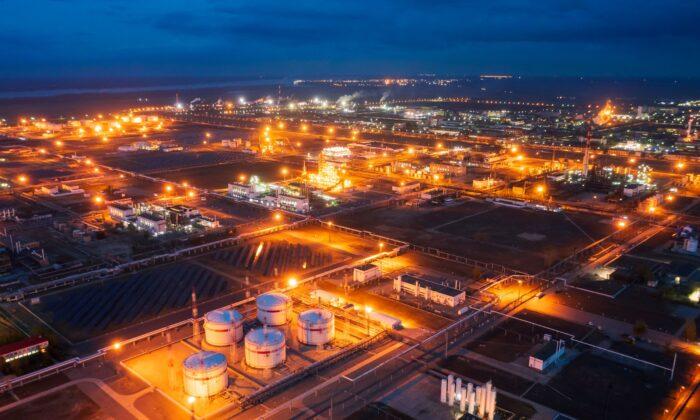According to Andrei Bocharov, governor of Russia’s western Volgograd region, air defenses repelled “a massive attack by aircraft-type drones,” falling debris from which caused several fires at an oil refinery, he said.
However, Bocharov did not identify the stricken oil refinery.
In a statement, the Russian Defense Ministry said its forces had intercepted and destroyed 70 Ukrainian drones over Russian territory in the early hours of Feb. 3.
These included 25 in the Volgograd region, 27 in the Rostov region, and seven in the Astrakhan region near the Caspian Sea.
According to Astrakhan Gov. Igor Babushkin, Ukrainian drones targeted multiple energy sites in the region, causing a fire in at least one location.
“Ukrainian armed forces attempted a drone attack on objects located in the region, including fuel and energy facilities,” Babushkin wrote on the Telegram social media platform.
The attacks did not cause any casualties, he said, providing no other details.
Andriy Kovalenko, head of Kyiv’s anti-disinformation agency, claimed that a major gas processing plant in Astrakhan had been successfully struck.
Operated by Russian gas giant Gazprom, the plant has a daily production capacity of approximately 8,340 metric tons of gas condensate.
The Epoch Times could not independently verify claims made by either side of the conflict.
In the immediate wake of the drone attacks, Russia’s federal air transport agency temporarily halted flights from Astrakhan and Volgograd and from the western cities of Kazan, Nizhnekamsk, Saratov, and Ulyanovsk.
Last week, Ukraine carried out a similar drone attack on energy facilities in nine regions of Russia, including a nuclear power plant in the Smolensk region, which shares a border with Belarus.
In recent weeks, Ukraine has stepped up attacks on energy production sites deep inside Russian territory, typically using missiles and drones.
According to Kyiv, such facilities, especially oil refineries, play a key role in fueling Russia’s ongoing invasion of eastern Ukraine, which will enter its fourth year on Feb. 24.
Russia, too, carries out frequent strikes on energy infrastructure inside Ukraine—also typically using missiles and drones—similarly claiming such sites serve a military function.
Both sides say they use precision weapons when carrying out respective attacks with a view to minimizing civilian casualties.
On Jan. 24, Kyiv conducted one of its largest aerial attacks to date, firing more than 120 drones against multiple targets in 13 regions of Russia.

Closing In on Pokrovsk
In eastern Ukraine, Russian forces have continued to close in on Pokrovsk (Krasnoarmeisk in Russian), a key Ukrainian transit and logistics hub.In 2022, Russia invaded and effectively annexed Donetsk, along with three other regions of eastern and southeastern Ukraine.
In televised remarks cited by TASS, Pushilin claimed that fierce fighting was now underway near a settlement close to Pokrovsk in the direction of Kurakhove.
Last month, Russian forces overran the town of Kurakhove, which sits roughly 20 miles south of Pokrovsk.
The fall of Pokrovsk, which is now largely surrounded by Russian troops, would bring Moscow one step closer to cementing control over the entire Donbas region.







